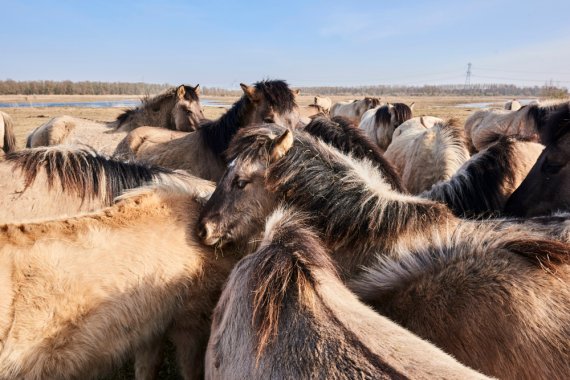© Shutterstock
Why are you coming out with this now?
‘Up to now I always thought: the deterioration of nature in the agricultural areas is a much bigger problem; let me focus on that. But the dying animals in the Oostvaardersplassen are undermining the support for nature conservation among the general public. And the biodiversity in the dry part of the Oostvaardersplassen is going downhill fast. Once it was a gorgeous nature area with nightingales and whinchats. Now it’s a desolate plain with barnacle geese, greater white-fronted geese and greylag geese.’
Isn’t it a pity to end an experiment like this? Two of your PhD candidates did their research on this.
‘In 1983, the idea was that the presence of the large grazers would lead to a park-like landscape with thorny shrubs and thickets of trees. I thought that was an interesting idea and Frans Vera did his PhD on it with me. Later my PhD student Perry Cornelissen did a lot of research on the development of the area. Now we can see that those forecast developments aren’t taking place. Nor is there much chance of their doing so anymore. The soil is so nutrient-rich that the seedlings of the blackthorn and the hawthorn either get grazed on or – in places with less grazing – get overshadowed by herbs and grasses.’
So no more grazers at all?
‘What is there now really isn’t very natural. So yes, it would be better to get rid of them altogether. Instead, we could flood the dry area, expanding the swampy area. We could put down wooden walkways through it. People would be able to experience that gorgeous nature much better that way.’
How are your colleagues responding?
‘I’ve had one furious email, but I’m getting much more support, even from the rangers of the state forest service Staatsbosbeheer.’

